 |
Loadin
|
 |
 |
Loadin
|
 |
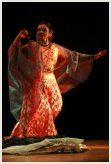 |
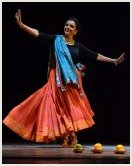 |
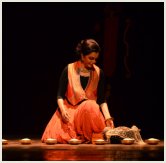 |
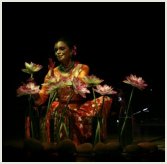 |
 |
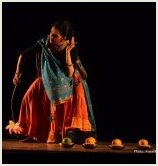 |
|
Home
| Synopsis
| Credits
| Calendar of Performances | Critics Speak | Response | Photo Gallery
a million SITA-s - Response a Neo Bharatam presentation Response - students' feedback to the performance on May 3, 2015 at the NYU Steinhardt School, Greenwich Village Storytelling in the Classroom, Spring 2015 - Megan Ibarra Anita’s Ratman’s telling of A Million Sitas was an engaging and beautiful portrayal of women from Indian folklore. Anita brought the stories of these women alive through costuming, dance, and characterization. Her unique combination of traditional Indian dancing, contextual explanations, and animated acting made for a powerful portrayal that was accessible to all audiences. My previous experiences with Indian storytelling have been through very traditional dance and music. Past performances that I have seen have been done completely in a native Indian language and all danced, with each dance flowing seamlessly to the next. I appreciated that Anita kept some of the traditional elements of this while breaking the dance and songs to tell the story to an English speaking audience. Beyond the actual story, Anita would also break to provide some cultural background and explain how the gods are understood now in the Indian community. There was enough narration and explanation in English for westerners to enter into the Hindu epic, while also maintaining enough traditional elements to appeal to Indian audience members as well. Anita’s unique storytelling was characterized by her use of traditional dance, suggestive costuming, and physical characterization of the women she was representing. Since this epic follows four very distinct women, Anita introduced each character with a unique dance and piece of costuming that highlighted their personalities. After a verbal description of the character, the dance and costuming allowed the audience to really experience who these women were beyond words. The dance set the mood for that portion of the story being told. First, Mandodari, Ravana’s wife, was represented by a green glove depicting her earlier life as a frog. Anita’s facial expressions and movements through the dance were enticing and alluring. Then, Manthara was contrasted with this character by wearing a tattered shawl to show her status. She danced with a basket as her hunchback and made abrupt, swift movements to show her desperation to remove Rama from power. Later, Anita describedAhayla by her immense beauty. Anita used a simple gray cloth to represent her elegant and majestic beauty. However, this simple cloth was regally draped around her waist and shoulder as she danced very gently and graciously to show Ahalya’sangelic character. As Ahalya is cursed by her husband and becomes a stone, the gray fabric is used to cover her and reveal the shame that traps her. Next, Anita almost completely changes costumes to introduce Surpanakha. Her dark flowing pants, witch like fingers, angered facial expressions, and eerie movements help us to know that is a character not to be trusted. Anita helped us to enter into the world of these women through dance, clothing, and expressive movements. The ending of the story helped the audience connect personally and tie the stories of these women together. Anita ended the story about Sita by handing audience members rose petals as she explained how we are all Sita in the way that we share the struggles and adversity of women. Handing us the rose petals helped us to think about how there is a bit of Sita in our own lives. It was a way of connecting the stories of all of this women and inviting us to remember our own as well. The performance made me think of how women are depicted in religious stories that I grew up with. Like Indian culture, women in the bible are often overshadowed by the dominating male characters. However, when you take the time to really look at their stories, I see strong, very influential women. It was very powerful for me to hold these petals in my hand along with all the other women (and men) in the audience as I thought about the remarkable story of these Indian folktales. The tangible experience of the role petals also was a symbol of giving us the gift of storytelling. It was beautiful way to leave the audience at the end. Although this was more performative than a lot of the work that we had done in class, it did reflect a lot of what we had talked about and the reading we studied. These stories were used as a way to pass on the history of Indian culture, unite a community of women, and cause the audience to reflect on their own life through the story. Home | Contact |
About Arangham | About Anita Ratnam |
Events | Archive of events | Calendar of events
| On Tour | Press
|
Articles | Lectures | Publications | Active Repertoire | Festivals | Conferences | Rituals & Revivals | Workshops | Art & Activism |